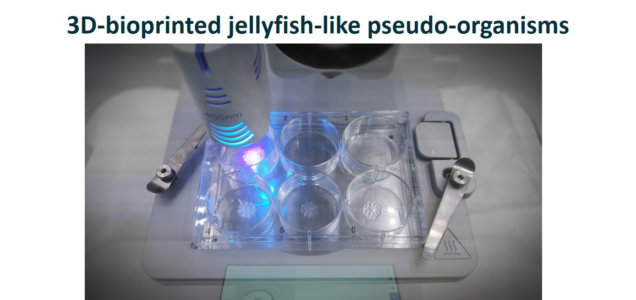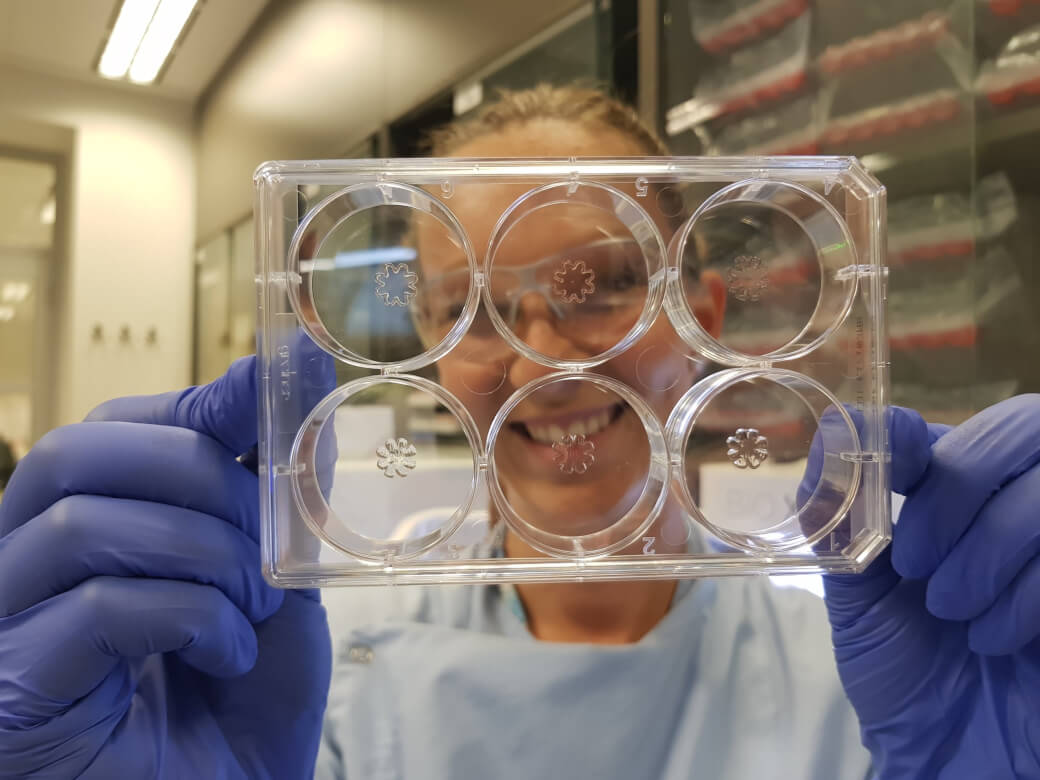I interviewed Dr Nina Pollak via Zoom to discuss her research interests and career aspirations. She is presently a CSIRO Synthetic Biology Future Science Fellow at the Molecular Engineering Group led by A/Prof Macdonald at the University of the Sunshine Coast in Australia.
Originally from Austria, Dr. Pollak has completed a number of international research projects and collaborations that have resulted in an impressive number of honors and awards since receiving her PhD in 2014. And she has already started down the startup path supporting research to commercialize a better way to make disease diagnosis fast and effective.
One notable collaboration involves Dr. Pollak, Dr. Bradley Harding, and A/Prof Joanne Macdonald. Their work, in the cutting‐edge field of DNA‐based computation, was published in the prestigious chemistry and nanotechnology journal, Nano Letters (Impact Factor 12.080). “Repeated Reuse of Deoxyribozyme‐Based Logic Gates” addressed the finite‐use and wastage problems of current DNA‐based circuits and lays the foundations for the next class of DNA‐based computer systems.
Her current research and focus of her fellowship explores ways to extend the boundaries of synthetic biology with the field of tissue engineering. The purpose of this research is to discover novel ways to detoxify the natural environment by creating mobile tissue‐engineered pseudo‐organisms – a form of synthetic biology.
Dr Pollak graduated from the University of Graz (Austria) with a PhD in Biochemistry and Molecular Biology. She has authored 13 peer-reviewed publications and six conference papers.

The following is a condensed and edited version of my fascinating conversation with Dr. Pollak:
Are jellyfish the primary part of your work, the organism you are engineering?
Yes, the whole idea is to create a moving jellyfish-like organism. The pseudo-jellyfish I’m working towards represents the young form – in the juvenile stage. It looks like a flower. What inspired me to create this jellyfish-like pseudo organism was work done by Kit Parker at Harvard University and his colleagues. They built the first artificial jellyfish. Then they came up with a more advanced pseudo-organism that resembles a stingray. It reacts to light, swims towards it.
Are these organisms eukaryotes?
These two pseudo-organisms use muscles cells from the hearts of real neonatal rats. So it’s not a real animal – it’s all engineered. For the stingray they used biocompatible material that they casted with a mold. And then they added a microfabricated gold skeleton and a layer of heart muscle cells.
So this is an example of synthetic biology?
That’s a good question and the answer is up for debate. Synthetic biology is very broad. Some people argue that tissue engineering in these examples is not synthetic biology. My project is basically combining tissue engineering with synthetic biology. So what I want to do is take this artificial jellyfish a step further and actually make it useful to us. I want to use it for bioremediation purposes – or make it clean water. There are really cool things going on in the space. Other people want to build biological machines that can walk and transport and sense the environment. We’re all in the phase now where we’re trying to understand how nature builds organisms. My fellowship is about taking a quite simple body form, this young jellyfish structure, and recreate it to be better, smarter with genetic engineering. The cell system I use are human stem cells.

You get the stem cells to express the gene for heart cells?
With stem cells you don’t use a gene – you use defined growth factors. These are like cues to go down the right pathway to make heart cells. This is a well-known, and quite simple process.
These stem cells don’t divide and they don’t reproduce?
Stem cells can divide forever if you treat them well. But as soon as you go down the path to differentiate the cells, for example heart cells, that’s where it stops with the unlimited cell division.
So there is no worry about alteration and uncontrolled reproduction?
No, these pseudo-organisms have no reproductive organs and they cannot reproduce. Pseudo-organisms are not like genetically modified organisms, which are real organisms. The pseudo-organism I’m working with will basically disintegrate or dissolve after some time. We want to leave no trace behind.
In terms of cleanup, the mode of action is mechanical not chemical?
It is enzymatic. If we talk water, the chemicals I’m interested in are pharmaceuticals like synthetic estrogen or antibiotics. These kinds of chemicals escape wastewater treatment and make it into the animal kingdom. By genetically engineering the cells of the pseudo-organism, I can add a bioremediation function to the cells in form of an enzyme. And I’m using a very well-known enzyme called CYP1A2. This is an enzyme that’s found in our liver. Our liver’s job is to do detoxification.
So there is no metabolism in this pseudo-organism?
These are real heart cells and they have a metabolism. They need an energy source, which is sugar in the lab. Our hearts actually rely on fatty acids, and not so much on sugar, for energy. Feeding cells in the lab is done by repeatedly adding nutrients and this is sufficient at this stage, the proof-of-concept stage. In the long run, the goal is to make the pseudo-organisms more energy efficient, possibly by making them solar-based.
Would this early-stage research project be viable in a startup?
This CSIRO fellowship is all about that. Getting your idea ready to go into the startup phase. We don’t publish as much as other fellowships, and we protect the IP and the commercialization rights.
So you need to make a deal?
Yes, I found it to be a lot of fun to deal with IP lawyers and figure out patents and the whole business side of research. It’s a good place to be. Synthetic biology has a lot of potential, but we need to deliver. I’ve started to work with a startup already. It’s in the applied diagnostics space and it has very immediate impacts for people in need of a simple and quick diagnosis.
Cover image by Dr Christofer Clemente

